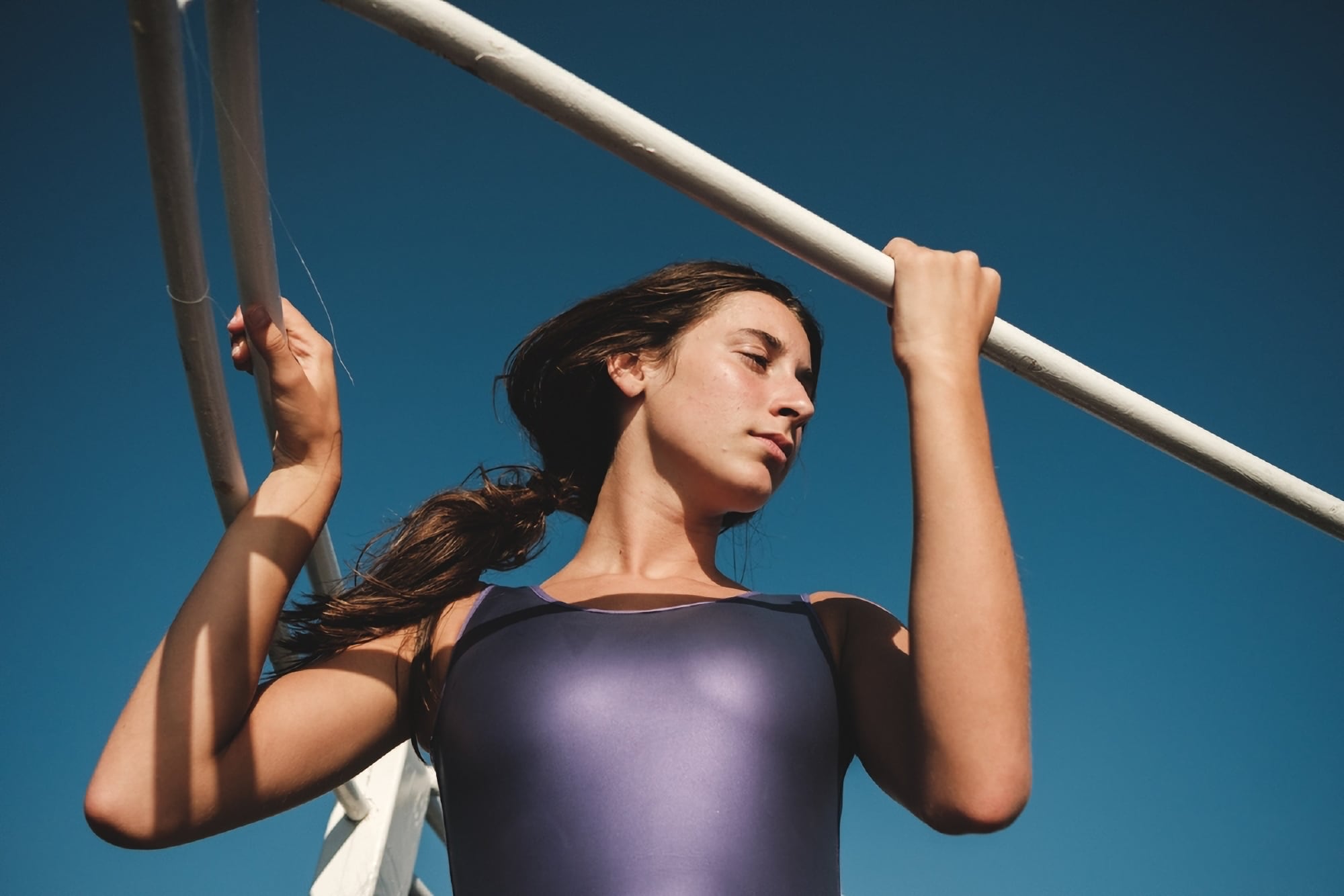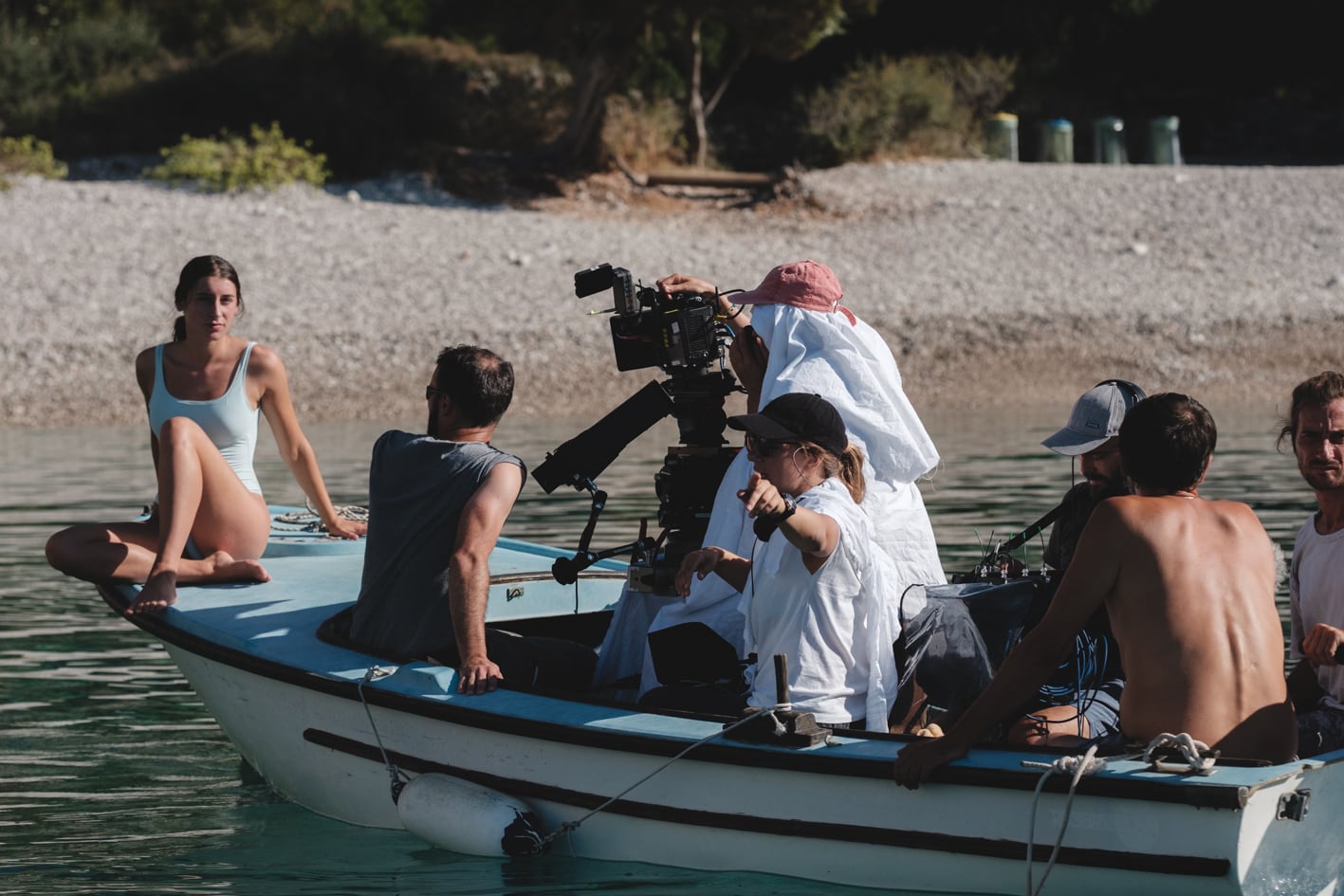
Murina transports us back to the turmoil of adolescence, a longing to escape the clutches of parents and imposed obligations and the desire for a bigger and better life. Set in a seemingly idyllic sun soaked existence on the Croatian coast, Director Antoneta Alamat Kusijanović celebrates restless teenager Julija’s defiant passage into adulthood in a debut feature sharply punctuated with desire, chauvinism and opposition. Kusijanovic first came across her lead actor, Gracija Filipović, in the casting of her short Into the Blue and has masterfully crafted a world around the young professional swimmer in Murina. The glittering coastline and peaceful underwater scenes are rocked by a father’s violence and voracious greed. Much like a moray eel from which the film takes its title and who will bite its own flesh to escape capture, we see a desperate fight for liberation unfold over 92 enthralling minutes. Murina saw Kusijanovic win the prestigious Caméra d’Or for best debut feature at Cannes and is being released by Modern Films in cinemas on the 8th of April followed by a virtual cinema release from the 9th of May. DN had the opportunity to sit down with Kusijanovic ahead of Murina’s release for a chat in which we discussed why her actors undertook tango lessons, building the feature around Filipović’s magnetic presence and swimming abilities and why she likens the delivery of a film to that of childbirth.
How much of Murina was developed from your 2017 short Into the Blue?
When I made Into the Blue, I was very interested in the conflict between the nature within us and nature outside of us. Specifically at that age where you are full of hormones and don’t know what’s allowed and what’s not allowed within social constructs. Through working with Gracija, who really mesmerised me with her wild nature and hormonal impulses, I decided to write Murina specifically for her. I wanted to have this teenager who is totally unaware of what to do in social situations but with incredible convictions opposite adults who are really just grown up children together in a coming-of-age drama.
How did the script develop from that point with Gracija front and central?
She’s a professional swimmer which is how I cast her in Into the Blue so I knew that we would be able to do a lot of underwater work which I love. We experience such a different world underwater. Once we are not constrained by the rules and rehearsed social constraints we find on land, we are able to exercise so many different emotions. Whether that be forbidden desire or the spilling of your father’s blood. Something about her also reminded me of myself, her resilience and I really wanted to portray that in the film. The family dynamic on screen is one we often see in Croatia and was something I also wanted to explore.
Once we are not constrained by the rules and rehearsed social constraints we find on land, we are able to exercise so many different emotions.
We both grew so much in the making of the film and personally it was the first moment I became aware that I was a feminist. I had never said it out loud before as I never felt the need, I was raised by a very strong accomplished mother and there was never any such conflict in my upbringing so why would I feel the need to state such a thing but the making of Murina very much brought it out of me.

Did you find any challenges building the rest of the cast around your lead?
This was a tricky process as I didn’t want to cast anyone who didn’t really click with her. I would do a preliminary cast just with my casting director and then I would confront people with her in the room. From there it slowly grew. We started with Leon Lučev as Ante, her father and then it was the three of us working to cast the mother, played by Danica Čurčić and then we cast Cliff Curtis as Javier. Before filming started everyone spent a considerable amount of time together, we went through all different kinds of preparations. Gracija and Leon were undertaking English lessons, there were guitar lessons, diving classes and harpoon handling. Finally, they also had tango lessons to work on their proximity to each other within scenes. All the while we were all living together in the same house which helped to develop their roles and was so intense. I’m not sure if I will have the opportunity to do so again but I loved it.
The film’s cinematography is gorgeous, it’s bright yet sinister all at the same time. Can you talk about achieving the look you wanted?
I worked with the master, one of the best cinematographers of our time Hélène Louvart. She makes everything that is complicated very simple and she makes everything very real which is why I wanted to work with her. She’s really like a doula to film, she delivers them. When looking for locations I wanted to find the most inhabitable places where it would be hard to survive. I wanted locations without trees with nowhere to hide and nowhere to re-think your actions so that the actors would act with more immediacy and from impulse.






Hélène works amazingly with natural light. In these harsh and stark locations natural light was our only tool. We couldn’t plug in big lights or anything because we were a 20 minute hike from the house, a half an hour drive from our underwater locations and an hour drive from all the beaches. We were working with the sun, clouds and wind which totally informed how we shot. We had to be adaptable and Hélène did amazing work.
We were working with the sun, clouds and wind which totally informed how we shot.
As this is your first feature film, how did you find the post-production process of crafting a full-length narrative?
I have to say, editing came very easy. It’s very easy to create big changes and cut whole scenes when you start but I found it much more difficult in applying the small changes. Once we had the cut locked in and moved into sound design I really started examining the film. It’s only then that you can find a lot of repetitive beats in the sound and once you discover that it’s a completely new world, it’s like turning something on. For me, it’s those small switches and changes that really made Murina what it is now and that only happened once I entered the sound design and I got to clip the scenes by frames here and there.

So how long did that whole process take you?
We were editing for about 12-14 weeks and then sound design was interrupted twice because of COVID. So I did a first pass of sound design in March 2020 and then I finished it in February 2021. For an entire year, I was sitting on the film with nothing happening which led to lots of little changes here and there but I didn’t find it a helpful process to go through. I prefer tight schedules with intensity where you enter a certain mania and are totally absorbed by the film as when that cools down you can become too logical and too analytical. I was aware of that danger but thankfully I was pregnant when I went back into the sound design so I had other strong emotions going through me which allowed me to keep the emotional flow and stay away from the analytical side. It is so much better to make the movie in one go and deliver it immediately. You don’t stop and pause in the midst of delivering a child to have lunch and a coffee, you have to continue in labour and making a film should be much the same.
What do you want audiences to take away from a viewing of Murina?
I want people to remember the resilience they had as children, unphased by social constructs but to have all the wisdom and experience they have right now. I think that combined would be wonderful.


